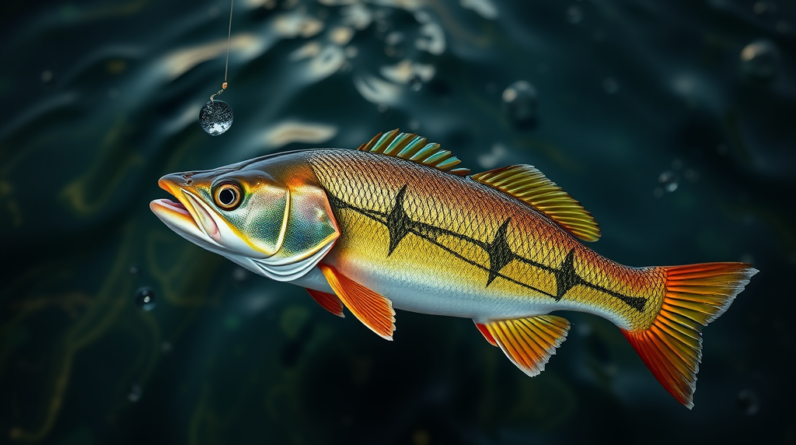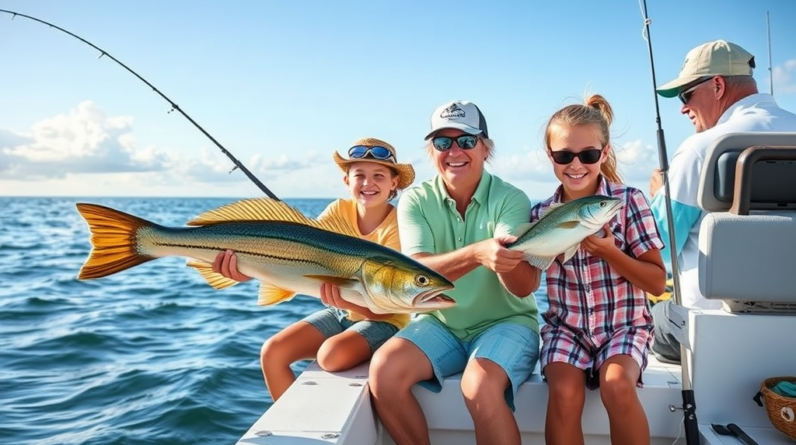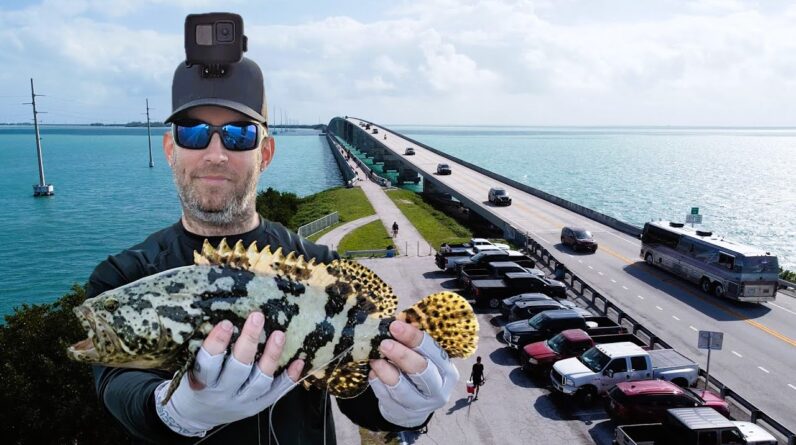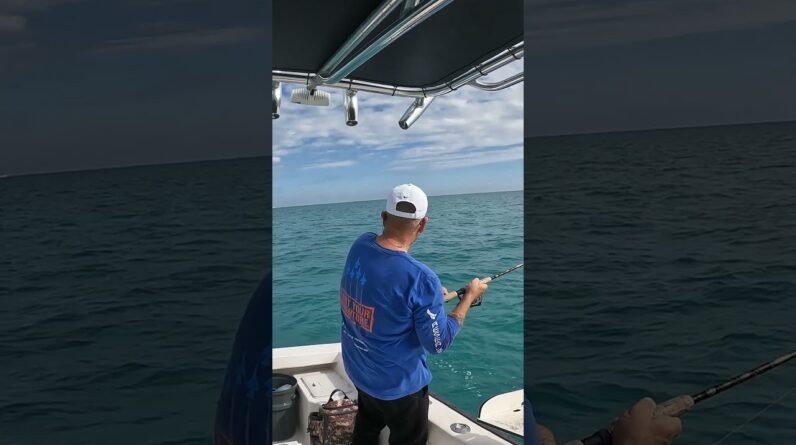
Table of Contents
The Impact of Hurricanes on Coastal Fishing Seasons
Coastal fishing is an integral part of many communities, especially in regions where the economy relies heavily on marine resources. However, weather patterns, especially hurricanes, significantly affect fishing seasons and methods, altering the behavior of fish and the conditions in which anglers operate. Understanding these changes can make a big difference for fishermen looking to maximize their catches.
The Effects of Hurricanes on Fish Behavior
When a hurricane approaches, the ocean’s environment undergoes dramatic changes. Fish are sensitive to variations in water temperature, salinity, and pressure. Here’s how hurricanes impact their behavior:
- Temperature Changes: The water temperature can drop significantly due to heavy rain and cooler winds. Fish tend to seek warmer water as the storm moves in.
- Increased Turbidity: Storms stir up sediment, reducing water clarity. Fish may become more aggressive as they rely more on their sense of smell than on sight.
- Altered Oxygen Levels: Hurricanes can lead to lower dissolved oxygen levels in the water, forcing fish to seek areas where oxygen levels are higher.
The Timing of Fishing Before and After Storms
Fishing patterns before and after a hurricane differ widely. Understanding the best times to fish around storm events can help maximize your success.
- Before the Storm: As barometric pressure drops, many fish become more active. This can lead to excellent fishing just days before a storm hits, as they feed more heavily to prepare for the changes.
- During the Storm: Most anglers stay off the water during hurricanes due to safety concerns. However, if the storm weakens to a tropical storm, some experienced fishermen may still attempt to fish the outskirts where conditions are not as severe.
- After the Storm: Generally, fishing can improve significantly. As the water begins to clear, fish often congregate in sheltered areas where currents have brought in food, making it an ideal time to cast lines.
Best Fishing Methods Post-Hurricane
Once the skies clear and it’s safe to return to the water, the methods for fishing may need adjustment based on the changes brought about by the storm. Here are some effective strategies:
- Focus on Shallow Water: After a hurricane, fish often retreat to shallower waters. Targeting these areas can yield great results as they hunt for food washed in during the storm.
- Use Natural Baits: With a lot of debris in the water, natural baits can be more attractive to fish. Consider trying live or cut bait that mimics the local forage.
- Adjust to New Structures: Storms can reshape the seafloor by moving sandbars and creating new structures. Explore these changes and identify new hotspots where fish may be hiding.
The Importance of Local Knowledge
For successful fishing during hurricane seasons, it’s crucial to stay informed about local patterns and conditions. Here are ways to gather useful information:
- Engage with the Community: Local fishermen can provide insights on trends and behaviors in your area.
- Check Weather Reports: Always monitor local weather predictions to anticipate hurricane patterns and their potential impacts on fishing.
- Use Fishing Apps: Utilize technology to track circumstances on the water and connect with fellow anglers.
Understanding the impact of hurricanes on coastal fishing seasons is vital for any angler. By adapting your fishing schedule and methods according to storm patterns, you can increase your chances of a successful catch. Whether it’s fishing before the storm when fish are active, targeting shallower waters afterward, or utilizing local knowledge to guide your decisions, being informed will always set you apart on the water.
Understanding Tropical Storms and Their Effects on Fish Behavior
Tropical storms are powerful weather events that have a profound impact on both the environment and marine life. Understanding how these storms affect fish behavior is crucial for anglers looking to optimize their fishing experiences. During and after these storms, there are many shifts in the fish population and their feeding habits that can significantly influence the best times and techniques for fishing.
How Tropical Storms Impact Water Conditions
When a tropical storm approaches, it brings heavy rainfall and high winds that alter the physical and chemical composition of water bodies. Here are some key changes to expect:
- Water Temperature: The mixing of surface water and deeper water layers can cause temperature fluctuations. Fish are often more active in specific temperature ranges, so this can lead to changes in their feeding behavior.
- Salinity Levels: Heavy rain can dilute saltwater, impacting fish that prefer certain salinity levels. Fish like redfish and snook may move closer to estuaries where salinity is more stable.
- Turbidity: Increased sediment from heavy runoff can cloud the water, which may disrupt feeding patterns and affect visibility for predators and prey alike.
Behavioral Changes in Fish
With the drastic environmental changes, fish respond in various ways that can influence your fishing success. Here are some common behavioral changes during tropical storms:
- Increased Activity Before the Storm: Many species, including bass and trout, tend to feed aggressively in the hours leading up to a storm. This is an excellent time to go fishing as fish sense the impending pressure changes.
- Reduced Activity During the Storm: When the storm hits, many fish become lethargic and seek shelter. They often stay hidden among underwater structures or vegetation, making them harder to catch.
- Post-Storm Movement: After the storm passes, fish often emerge and become very active, searching for food scattered by the turbulent conditions. This is an opportune time to cast a line.
Best Fishing Techniques During and After Tropical Storms
Fishing during the erratic weather following a tropical storm can yield exciting results if you choose the right methods. Here are some effective techniques:
- Use Bright Lures: In murky waters, bright and contrasting colored lures attract fish better. Consider using chartreuse or pink lures that stand out against the washed-out backdrop.
- Focus on Shallow Water: Fish often move to shallower areas post-storm due to changing water levels and feeding opportunities. Exploring grass flats, shallow reefs, and estuaries could lead to productive catches.
- Fish Near Structuring Elements: Areas with structures like fallen trees, rocks, and sea walls serve as hiding spots and feeding areas for fish. Cast your line near these structures where fish congregate.
Best Times to Fish After a Tropical Storm
Timing is everything when fishing after a tropical storm has passed. It’s crucial to identify the right timeframes to maximize your catch:
- First Light: Early morning is typically the best time to fish after a storm as fish tend to feed heavily in cooler temperatures.
- Overcast Days: Cloudy weather can provide excellent fishing opportunities, as fish feel more secure with reduced sunlight.
- Post-Storm Calm: Once winds die down, fish often return to their feeding patterns, making this a prime time to fish.
Understanding how tropical storms influence fish behavior can empower you as an angler. Knowing when to fish, how to adjust your techniques, and what to look for in terms of water conditions can lead to a rewarding fishing trip. By staying informed and adaptable, you can harness the potential of fish behavior in the wake of tropical storms, making your time on the water more enjoyable and successful.
Best Fishing Techniques Before and After a Weather Event
Fishing is a beloved pastime for many, but when it comes to the influence of weather events such as hurricanes and tropical storms, understanding the best fishing techniques becomes essential. Different weather patterns affect fish behavior, migration, and feeding habits, which in turn impacts your success on the water. Here’s a look at the best fishing techniques before and after a weather event to help you maximize your catch.
The Effects of Weather Events on Fish Behavior
Weather changes create a stir in aquatic ecosystems. When a storm approaches, conditions such as wind, rain, and temperature shifts can drastically alter the habitat of fish. Hurricanes and tropical storms cause increased water turbulence. This can elevate the excitement for predatory fish, which is a key consideration for anglers.
Best Fishing Techniques Before a Storm
In the days leading up to a storm, fish often know that something is changing in their environment. They can become more active as they prepare for the shift in conditions.
- Time Your Fishing: The hours before a storm are often the most fruitful. Fish tend to feed aggressively to prepare for the drop in activity that often follows a weather event. Aim to fish during early mornings or late evenings.
- Target Shallow Waters: In the days leading up to a weather event, especially tropical storms, fish may move into shallow waters where they find shelter. Focus your efforts on these areas, using lighter tackle and smaller bait to entice them.
- Choose Active Bait: Live bait such as minnows or shrimp can be very effective. Predators often chase bait as storms approach, making them more likely to strike.
- Monitor Barometric Pressure: As a storm approaches, barometric pressure will drop. Many anglers find fishing is best just before the storm hits when pressure is still falling, as fish tend to feed more.
Best Fishing Techniques After a Storm
Once a hurricane or tropical storm passes, waters can become turbulent, and underwater conditions might change significantly. However, this does not mean fishing should be avoided altogether. In fact, it can be quite advantageous.
- Wait for Calm Waters: After a storm, it’s best to wait for the water to calm down. Fishing can be challenging immediately after the event due to high turbidity and debris. Once the water clears, fish return to their normal routines.
- Explore New Areas: Storms can change the landscape of rivers and coastal areas, creating new spots where fish may gather. Look for changes in structure or cover that might attract fish.
- Use Darker Lures: The water may be murky after a storm. Opt for darker lures that create a strong profile to help fish locate them in the turbid conditions.
- Pay Attention to Temperature: Post-storm, water temperatures may fluctuate. Fish are cold-blooded creatures, so focus on areas where water temperature is more stable, such as deeper sections or sheltered bays.
Understanding Storm Impact on Ocean and Freshwater Fishing
The impact of hurricanes and tropical storms differs between ocean fishing and freshwater fishing. In coastal areas, fish might be driven deeper and can react differently to changes in salinity and water temperature. Conversely, in freshwater environments, runoff can lead to nutrient-rich water that attracts many species.
It’s also vital to be cautious during and after a storm concerning safety and local fishing regulations. Always check for advisories regarding hazardous waters or any area restrictions before heading out.
Final Thoughts
Understanding how weather patterns, like hurricanes and tropical storms, influence fish behavior allows you to adapt your fishing techniques effectively. By timing your trips before and after these weather events, using the right bait, and adjusting your location based on water conditions, you’ll enhance your chances of a successful fishing experience. Always keep safety in mind and stay informed about environmental changes to enjoy this time-honored recreational sport.
Seasonal Patterns: How Weather Influences Fish Migration
Understanding how seasonal patterns affect fish migration is crucial for both avid anglers and marine enthusiasts. Fish behavior isn’t just random; it follows nature’s rhythms, and weather plays a significant role in guiding their movements. Let’s dive into how different weather patterns influence these aquatic journeys.
First, it’s important to recognize that temperature is a key factor. Many fish species migrate in response to seasonal changes in water temperature. Warmer waters in spring and summer attract fish to shallower areas. During this time, fish like bass and trout will move toward the coast or to lakes where the water is warmer. As temperatures drop in the fall, fish tend to seek out deeper, more stable waters where they can find comfort and food.
Rain and Freshwater Influx
When it rains, rivers and streams can swell with fresh water. This influx can significantly affect fish migration. Some species, particularly salmon, rely on these conditions to signal their return to spawning grounds. The increase in freshwater can wash nutrients into the water, attracting baitfish and, in turn, larger predators. Here’s how rain influences fishing:
- Increased Nutrients: Rain can lead to nutrient run-off into bodies of water, creating a perfect environment for baitfish to thrive.
- Temperature Regulation: Rain can cool down water temperatures in warmer months, making areas more comfortable for fish like catfish and carp.
- Altered Currents: Freshwater flowing into saltwater causes changes in salinity that can attract certain fish species closer to shore.
Wind Patterns and Fishing Conditions
Wind is another significant factor affecting fishing and fish behavior. It can influence surface temperatures, create currents, and even affect the availability of food. Here’s how wind influences fishing:
- Surface Disruption: Wind causes waves, which mix oxygen into the water and can lead to better feeding conditions for fish.
- Topwater Action: On windy days, fish may feed more aggressively near the surface, giving anglers an opportunity to use topwater lures effectively.
- Movement of Baitfish: Wind can push baitfish towards certain areas, often making these spots more attractive for larger predatory fish.
Seasonal Changes and Fish Behavior
As seasons shift, so do fish behaviors. Each season brings unique conditions that impact fishing:
- Spring: During the spring, as waters warm, fish are highly active. Spawning activity occurs, leading to increased feeding. Focus on shallow areas where fish are preparing to spawn.
- Summer: In summer, fish seek cooler waters. Look for them in shaded areas or deeper parts of lakes and rivers. Early morning and late evening are prime fishing times.
- Fall: As temperatures cool, fish pack on the pounds to prepare for winter. They feed heavily, making this an excellent time to catch bass and pike.
- Winter: Ice fishing becomes popular in colder regions. Fish slow down but can still be caught near heated discharge areas or deep pools.
Hurricanes and Tropical Storms
Extreme weather events like hurricanes and tropical storms can drastically change fishing conditions. These powerful storms can displace fish, alter habitats, and affect feeding patterns. After a storm, you may find fish in unusual locations. However, fishing directly during a storm is dangerous and often unproductive due to turbulent waters. It’s best to wait until conditions stabilize.
Ultimately, being aware of how weather patterns influence fish migration and behavior is essential for successful fishing. By considering factors such as temperature, rainfall, wind, seasonal changes, and extreme weather events, you can greatly improve your chances of a fruitful fishing trip. Whether you are a casual angler or a seasoned fisherman, paying attention to these elements will help you understand fish movement better and choose the optimal times and methods for fishing. Happy fishing!
Preparing Your Fishing Gear for Stormy Conditions
When the forecast calls for stormy weather, it’s crucial to prepare your fishing gear adequately. Storms can change water conditions rapidly, influencing fish behavior and your overall fishing success. Understanding how to ready your equipment can make a significant difference during such times. Here are some tips to help you get your gear storm-ready.
Know Your Environment
Before heading out, it’s essential to understand the type of weather you will encounter. Different storms, like hurricanes and tropical storms, create unique conditions. High winds and heavy rain can lead to rough waters, while changes in pressure can spur fish to feed aggressively. Research the location you plan to fish in to consider how the weather will affect it.
Assessing Your Fishing Gear
Stormy conditions demand that you assess your fishing gear thoroughly. Here’s what to check:
- Reels: Ensure your reels function smoothly. Clean and lubricate them if necessary to avoid malfunctions when you’re out on the water.
- Rods: Inspect your rods for any signs of wear or damage. A sturdy rod is essential to handle potential big catches in rough waters.
- Line: Replace worn fishing lines. Opt for a stronger line that can withstand the stress of turbulent conditions, making sure it matches your target species.
- Hooks and Lures: Check that your hooks are sharp, as this improves your chances of catching fish. Choose lures that are effective in stormy weather, such as brightly colored or noise-producing options to attract fish in murky water.
Choose the Right Tackle
When preparing your tackle, consider the specific challenges stormy weather presents. Strong winds may make casting difficult, so you may need heavier weights to keep your lure down in turbulent waters. Here are some suggestions:
- Heavier Weights: Equip your tackle box with weights ranging from 1 to 3 ounces, depending on the severity of the wind.
- Strong Hooks: Choose hooks that can bear the weight of larger fish, as storms can push fish into deeper waters.
- Extra Tackle: Bring additional tackle. You may lose lures due to snags or break-offs caused by rough water conditions.
Safety First
Your safety should always come first when fishing in stormy conditions. Before you leave home, check the weather forecast continually. If a storm intensifies, be prepared to head back to shore. Here are safety tips:
- Life Jackets: Always wear a life jacket. Rough seas can capsize your boat or kayak quickly.
- First Aid Kit: Carry a basic first aid kit to treat minor injuries that might occur while fishing.
- Communication: Ensure you have means of communication, such as a mobile phone or VHF radio. This can be crucial if you need emergency assistance.
Adapt Your Fishing Techniques
While preparing your gear is essential, adapting your fishing techniques can enhance your chances of success. Fish often react differently to storm conditions. As a general rule, here’s how to adjust:
- Fish Shallow: Storms can push fish into shallower waters where they feel safer. Try targeting these areas with your bait.
- Fish During Pressure Drops: Fish tend to feed actively when barometric pressure drops. Get out early, especially before a storm peaks.
- Shorter Sessions: Be mindful of your time on the water. Shorter periods of fishing can be more effective when weather conditions vary.
By preparing your fishing gear for stormy conditions, you can enhance your safety while increasing your chances of a successful outing. With the right approach, stormy weather doesn’t have to be a deterrent; instead, it can offer unique fishing opportunities. Stay safe, stay informed, and happy fishing!
Conclusion
Understanding how hurricanes and tropical storms influence fishing patterns allows anglers to make smart decisions for successful outings. The impact of hurricanes on coastal fishing seasons cannot be understated, as these powerful weather events can drastically alter fish availability and behavior. As storms disrupt marine ecosystems, fish may seek refuge or change their usual migration routes, making it essential for anglers to adapt their strategies.
Tropical storms also have a significant effect on fish behavior, often causing a temporary halt in feeding. Recognizing these changes is critical for those looking to catch specific species during this unpredictable period. Implementing the best fishing techniques before and after such weather events can enhance your chances of success. Targeting areas that are less affected by storm surges or finding locations where fish return can make all the difference.
Seasonal patterns play a key role in understanding fish migration, as changes in water temperature and salinity often follow storm activity. By keeping an eye on these environmental shifts, anglers can predict the best times to fish, maximizing their chances of a good haul.
Additionally, preparing your fishing gear for stormy conditions is vital to ensure safety and efficiency. Robust equipment can withstand harsh weather, while also helping you to take advantage of favorable conditions post-storm.
By taking into account the effects of hurricanes and tropical storms, and by adjusting your techniques, you can navigate these challenges and enhance your fishing experiences. Always stay observant, do your research, and remain flexible in your plans, and you’ll open the door to many successful fishing adventures.






